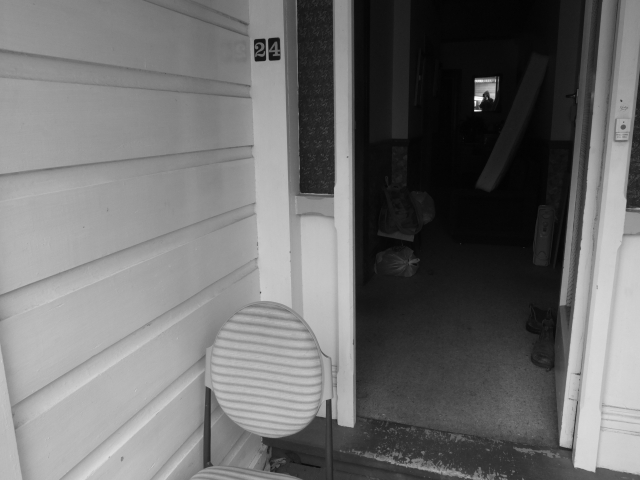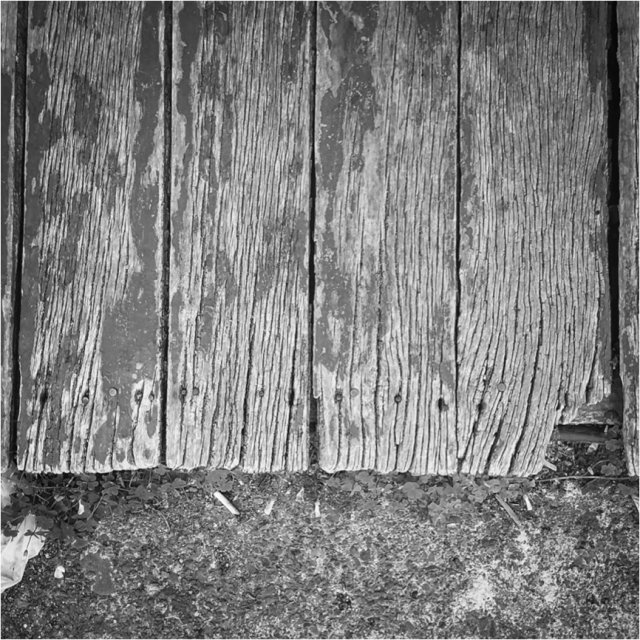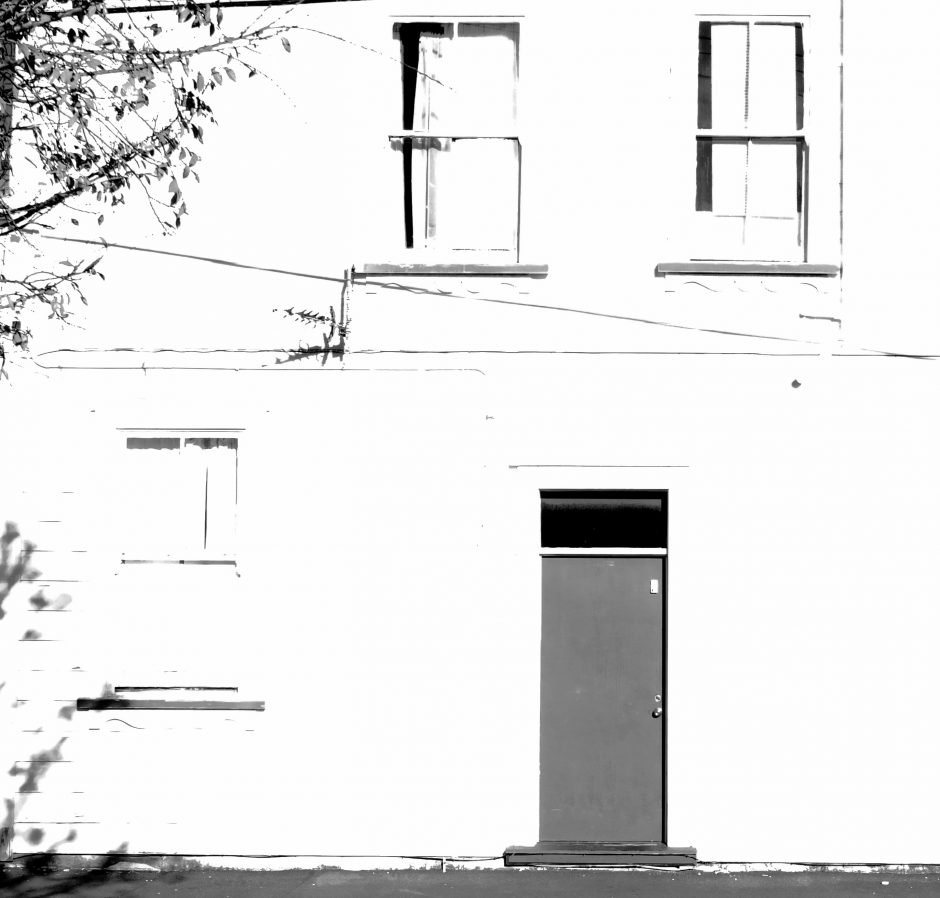
The house at 24 Roy Street was built in 1906. I moved in during December of 2014.
There was no tenancy agreement- nothing we had to sign, no bond to hand over, and I only had to pay $90 rent each week which was enough to cover bills and expenses.
From what I could figure out, it sounded as if the landlord, Mr Stanley, had lived there by himself, and then gone to live in Fiji, renting the house out to a couple he knew, and staying in the room at the back whenever he would return to Wellington.
Over the years, new tenants came and went, and before too long, it was occupied by myself, and four other people- all of us knowing very little about who we were paying rent too, but just happy that it was so cheap.
We asked no questions, and made no demands.
***
Facing north, the small garden out the front received all day sun. There was an orange brick fence between the garden and the footpath, about waist height with an iron gate in the middle. A short concrete path led from the gate up to the porch and front door. On either side of the path, there were two squares of rough lawn, each about 2×3 meters.
I dug it up and planted veggies around the old tree trunk roses.
I grew the lot:
- Garlic, because it’s supposed to grow well with roses
- Some of the biggest spinach I have ever seen
- Cherry tomatoes that climbed high up the bamboo bush
- Broad beans donated by stranger’s grandads
- Tomatoes
- Chillies
- Basil
- Capsicums
- New Zealand spinach and nomal spinach
- Corn
- Potatoes
- Beetroot
- Red cabbage
- Rows of leaks
- A mass of self seeding wild kale a meter and a half tall

The front porch was, in my opinion, the best part of the house. There were about 4 different chairs within arms reach, an alcove like doorway with cover from the rain – or shade from the sun – and two sturdy native timber walls either side for leaning.
It looked out onto the street.
The very best bit was the porch floorboards. They were original, had been painted over-and-over again, but at this point had mostly all worn off with some left over blue showing. The timber was all de-veined at the ends leaving only the toughest stuff, and the nails had become loose in their holes. It creaked and bent but never broke and we all spent hours and hours sitting in the sun and smoking in the rain.
 [above photo by Steph]
[above photo by Steph]

Inside the front door, the hallway stretched right down to the largest bedroom at the back.
The two front bedrooms were also big with bay windows looking out onto the veggie garden: One with sheets permanently over the windows to keep out the light and the other with crystals and wind chimes hanging.
The two middle bedrooms were smaller- but big enough.
My one was on the right. It was dark and cool and got very little sun due to the closeness of the neighbour’s house.
I filled it with op-shop purchases- cheap paintings, meat mincers, maps of the Far East, the World, London and the Pacific, and old chairs- that sort of thing.
I spent hours in there, killing mice and watching YouTube.

There was a small courtyard out the back. Over to the left there was a small lean too tool shed- filled with bikes, tools, paint, wire, nasty old bottles of garden chemicals and dusty broken shelves. A large creeper, which looked a bit like a passionfruit without fruit, did its best to hide it.
A collection of cacti had been forgotten about in the corner, and an old concrete or cast iron trough was overflowing with parsley.
Rhubarb and a blackberry vine grew in a planter box.
The property had been subdivided at some point and a small house was built out the back where the neighbour and her son lived.
Along one side of the house, weeds had grown high and there was a thick layer of soil on top of the concrete path.
On the other side of the corrugated iron fence there was a narrow railway type house exactly the same as the one next to it.
In it, lived a big American guy from one of the southern states. He talked about Soul Food; biscuits and gravy and black-eyed peas.
He told me how to make the best fried chicken.
“Nothing about Soul food is fast…”, he would say, his eyes hidden by dark sun glasses.
On the other side of the house, the weatherboards were disintegrating and housed beetles that ticked at night.
The street itself was short, probably about 250 meters, flat – although with a slight dip in the middle which sometimes flooded – and wide, with magnolia trees planted down either side.
***
I worked as a gardener for Mary Miles, a woman in her eighties who lived down the end of the road.
Mary and her husband moved into her house on Roy Street in 1962, when her first son was 2 years old.
“We bought the house because it was cheap…and it suited us because it was near the city and we both worked in town and there was a good tram…”
“…Newtown was not a desirable suburb in those days, but you could walk to the shops. It had all the conveniences and it was busy. From Roy Street down to McDonalds there’s nothing happening now…expect the 30 apartments on Mansfield Street”
Some old factories were being knocked down to make way for high-density townhouses.
The inside of Mary’s house was like a time capsule. The walls were lined with polished Matai and in the kitchen there was a big oven like no oven I had seen before.
Every week or so I would go and do some gardening at Mary’s, maybe some painting, and eat the lunch she would religiously make for me.
In a tall lunch box with a blue clip on lid, there was a sandwich- usually with ham, cheese, beetroot, pickle, and cucumber- about four biscuits –two chocolate and two non-chocolate- a can of coke, three fruit-burst lollies, a piece of cake- often home baked lemon cake, fudge, or shortbread, an apple or orange, and a small crunchy bar.
***
Across the road from Mary lived George. An ex ‘milk-bar cowboy’, George told me stories of racing from milkshake to milkshake on a triumph Bonneville and in a leather jacket.
He knew every inch of the mountain behind Roy Street and remembered it when it was a playground for drunks on motorbikes.
George still went up to the mountain everyday to walk a terrier from across the road.
Under George’s house there was a secret room- a wine cellar or bomb shelter. You got to it through a tunnel that started in the hallway cupboard. The walls were decorated with centrefolds from the 60’s.
“You’ll have to come back one day and check it out”, he told me.
***
Up the other end of the, street closer to the dairy, lived Mona, one of the Polish orphans that Peter Frazer bought over during the Second World War.
I ended up doing some gardening for her as well. She would come outside and lean against her walking frame, watching my every move…for the entire time.
This was a bit annoying at first, but after a while I realised she just liked the fresh air and perhaps the company.
Mona fed me coffee and chocolate biscuits. I would make the coffee, with her giving instructions from the lounge.
“Milk in fridge” she would say, with a heavy Polish accent.
Under a photo of the pope and a miniature Jesus on a miniature cross, we drank our coffees in mostly silence.
“Have another biscuit”
I ate a biscuit.
“Have another biscuit”
So I did.
The conversation usually went along like this. One day though, when Mona was telling me about her sore legs, she began to tell me a story.
“I walked from Poland to Russia when I was six years old…”
I forget how I reacted.
“My family died along the way. My little brother wrapped his arms around my mother’s neck before he died. My father was very sick and he asked me to go and look for food in rubbish bin…very sad…very very sad…”
“…You know Polish Priest? He very nice man…very very nice…”
“…Have a biscuit”.
We returned from halfway between Poland and Russia and sat under the familiar image of the old pope.
Jesus stared down at me from his cross. He looked in agony.
***
Out of the blue we got an email from the Landlord’s daughter. Mr Stanley had died months ago, and the house was being put on the market.
“I’ll be there on Thursday to go through his things…”, the email informed us.
The daughters’ arrival brought with it a number of arguments/ screaming matches.
“I’m a flatmate, not a landlord. I can come over whenever I want”, she told us.
“Get the fuck out of our house!”, we yelled.
“This is my fathers house!” she yelled back.
It was all really exciting.
Being the worst house on the best street, it didn’t take long for the place to sell.
We were given the minimum amount of time to move out, the place was painted white, and the rotten weatherboards were replaced.
The soggy bathroom floor and walls were finally fixed properly, and the sheets were pulled down from the front bedroom windows.
The original porch was ripped up and sent to the dump in splinters.
It was replaced with brand new, cheap decking timber.
The wild veggie garden was hacked at ground level and disappeared overnight.
A few potatoes survived by hiding under the dirt.
The rent doubled and the new residents, who cold afford it, went to work in the city every morning and barely got time to enjoy their brand new porch.
We moved on to other flats in the area where the paint was still peeling and the mice had lived happily for generations.
We found new old walls that ticked with beetles, and new old porches and front steps to sit on all day long.
We found new old landlords, and new old squires of dirt to grow some veggies.
This new place, for example, was built in the 1890’s,and added onto in the early 1900’s.
I moved in, in December 2015…
***

Oh my gosh man, this is so moving. I miss living at Roy St.
You’re awesome. Keep writing and taking photos, you have a gift. x
LikeLike
ah jeez thanks Grace! see u soon
LikeLiked by 1 person
That’s a good bitvof writing.
LikeLiked by 1 person